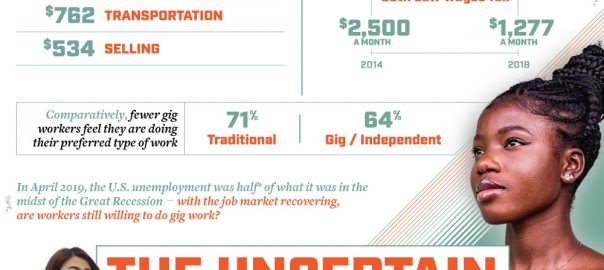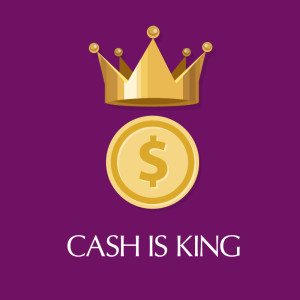— August 28, 2019
Since the Great Recession, gig jobs have been celebrated as the economy of the future – but after a decade, are U.S. workers still making a profit on gig jobs? Many of the biggest gig startups were created because of the Great Recession of 2008, with 7.2% unemployment after it, the demand for temporary and quick to start jobs rose by a huge number. In the decade since, the gig economy has expanded at an exponential rate; as of 2017, there were a huge number of gig workers as Airbnb had 150 million users and Uber had 42 million users, and according to some estimates there are as many as 75 million gig workers in the U.S. alone.
After swelling numbers of people jumped on the gig bandwagon, many faced the realization that living as solely as a gig worker was just not possible with the way that the gig economy is currently set up. Gig jobs nowadays also come with some serious financial detriments. Due to the nature of gig jobs, some things that don’t help are impermanence, income unpredictability, and lack of benefits. Many workers do not earn a living wage, according to the median monthly income, and pay for even the most active gig workers fell off by an astounding half over the course of four years.
In April 2019, the U.S. unemployment was half of what it was in the midst of the Great Recession – with the job market recovering, are workers still willing to do gig work? Part time gig workers are on the rise, while the full time gig workers are decreasing. The U.S. Department of Labor ruled that independent workers are contractors, and are therefore not entitled to minimum wage regulations or benefits – including insurance.
Find out whether with less and less appealing factors of gig jobs, is the gig economy doomed here.
![Is the Gig Economy Over? [Infographic] Is the Gig Economy Over? [Infographic]](https://www.onlinesalesguidetip.com/wp-content/uploads/2019/09/Is-the-Gig-Economy-Over-Infographic.jpg)
Infographic source: Online Schools Center
Digital & Social Articles on Business 2 Community
(40)
Report Post






